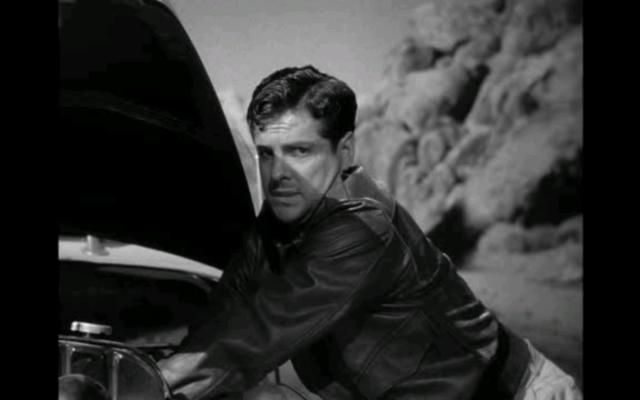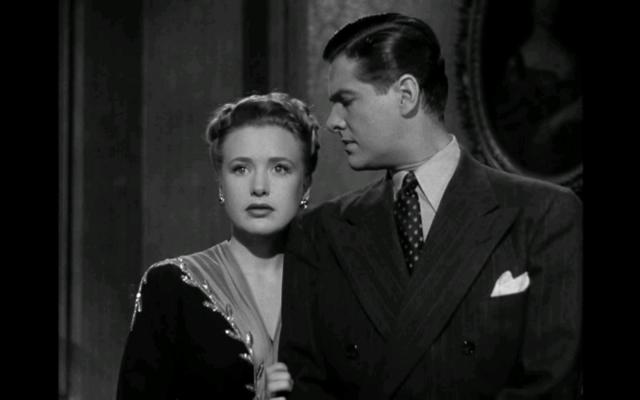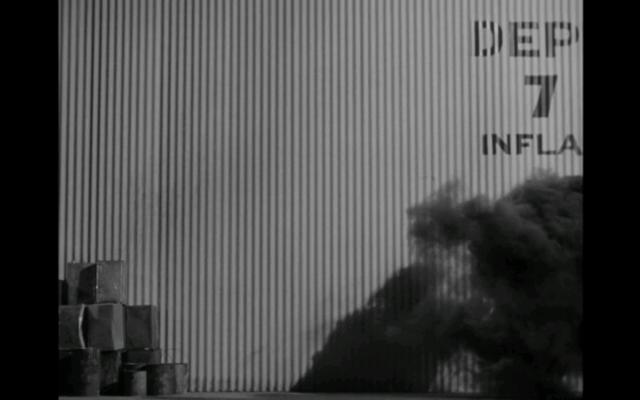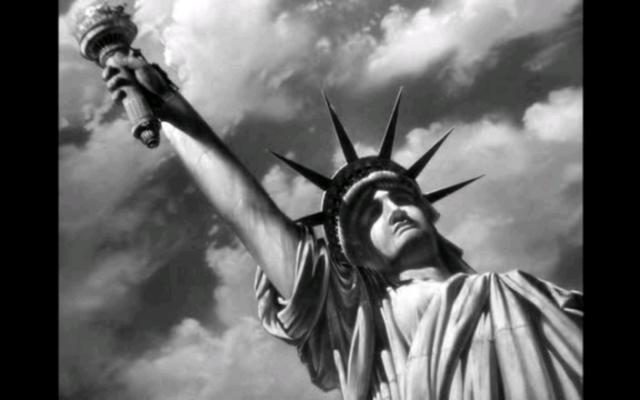|

Synopsis:
When an airplane factory worker (Robert Cummings) is wrongly accused of starting a fire that killed his best friend, he goes on the lam to search for the real saboteur (Norman Lloyd), enlisting the reluctant help of a feisty billboard model (Priscilla Lane).
|
|
Genres, Themes, Actors, and Directors:
- Falsely Accused
- Fugitives
- Hitchcock Films
- Priscilla Lane Films
- Robert Cummings Films
- Spies
Review:
Alfred Hitchcock made so many tautly directed thrillers about “falsely accused men” that it can be difficult to determine which ones should be considered required viewing. As an inveterate Hitchcock fan, I tend to go out on a limb in support of most of them — including this most enjoyable “man on the lam” flick, starring B-actor Robert Cummings in perhaps his most significant film role. Co-scripted by Joan Harrison (who wrote the screenplay for several of Hitchcock’s other same-era films, including 1940’s Foreign Correspondent), Saboteur was Hitch’s second film within six years specifically about sabotage, and may suffer somewhat in one’s memory from its rather generic title. It’s also often unfairly dismissed as merely an inferior thematic forerunner to Hitchcock’s later, more esteemed classic North by Northwest (1959).
Yet Saboteur remains a highly enjoyable flick in its own right: it’s jam-packed with exciting sequences, creative settings, and memorable character actors (most notably Otto Kruger as one of the first enemies Cummings encounters after his escape from the police, and Norman Lloyd as the real saboteur). As Cummings desperately wends his way across the country to clear his name, he encounters a requisite feisty love interest (nicely played by Priscilla Lane); meanwhile, he must escape from the clutches of an underground network of fascists who seem to lurk around every corner. From the opening act of sabotage — a dramatically filmed factory fire that astonishes me anew each time I see it — Hitchcock keeps his sets fresh and exciting; see stills below for glimpses of Cummings (with Lane) at a deceptively dangerous upper-crust party, escaping gunfire at Radio City Music Hall, and fighting for his life atop the Statue of Liberty. Other memorable scenes include Cummings’ poolside encounter with Kruger and his grandson, as well as Cummings and Lane’s brief interlude with a troupe of circus “freaks”.
Note: Listen for some zingy dialogue by Dorothy Parker, who contributed to several key scenes.
Redeeming Qualities and Moments:
- Robert Cummings as Barry Kane

- Priscilla Lane as Pat

- Otto Kruger as Charles Tobin

- Norman Lloyd as Frank Fry

- The opening factory fire

- The incredibly tense “party sequence”

- The creatively conceived Radio City Music Hall shoot-out

- The closing “Statue of Liberty” sequence

Must See?
Yes, as an underrated thriller by Hitchcock.
Categories
- Good Show
- Important Director
Links:
|









One thought on “Saboteur (1942)”
Not must-see but diverting and engaging.
The basic plot of ‘Saboteur’ is simply a variation on several other of Hitchcock’s innocent-man-on-the-run films. So we’re losing a sense of freshness here overall.
that said, it’s not dull and it follows the pattern of those other films while adding certain fun elements, not the least of which is the entire sequence in the circus caravan. That’s unique and well-played.
I find the Radio City sequence a bit odd. If you pay the least bit of attention to the film showing on the screen, you find that it veers strangely between being a comedy and being a murder tale. No doubt that was Hitch’s intention but it just comes off as strange and, to me, not as effective as it should be.
The last five minutes are indeed tense – but overall I find the film slightly unsatisfying because of its much-too-familiar structure.